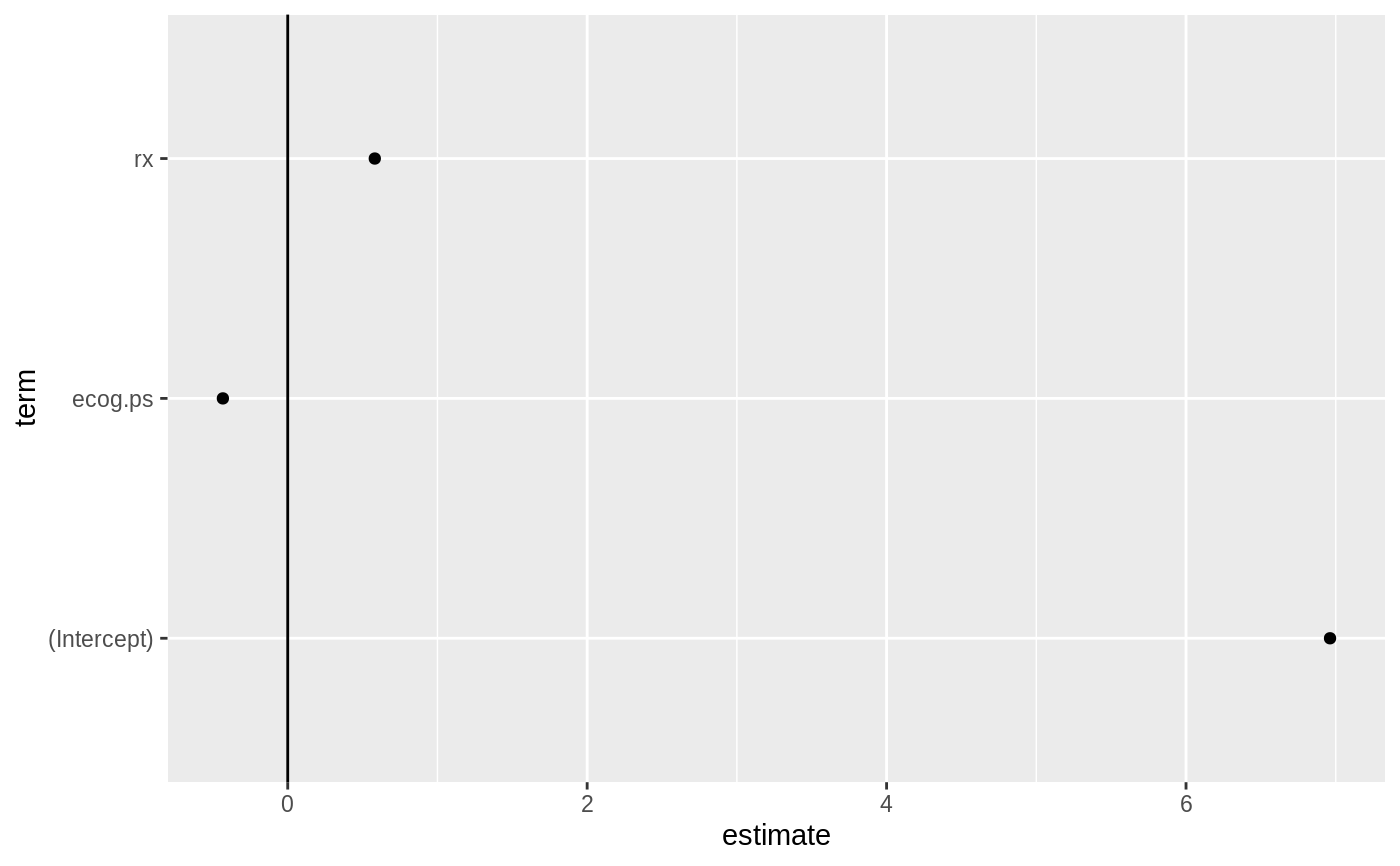Tidy summarizes information about the components of a model. A model component might be a single term in a regression, a single hypothesis, a cluster, or a class. Exactly what tidy considers to be a model component varies cross models but is usually self-evident. If a model has several distinct types of components, you will need to specify which components to return.
# S3 method for survreg tidy(x, conf.level = 0.95, ...)
Arguments
| x | An |
|---|---|
| conf.level | confidence level for CI |
| ... | Additional arguments. Not used. Needed to match generic
signature only. Cautionary note: Misspelled arguments will be
absorbed in |
Value
A tibble::tibble() with one row for each term in the
regression. The tibble has columns:
The name of the regression term.
The estimated value of the regression term.
The standard error of the regression term.
The value of a statistic, almost always a T-statistic, to use in a hypothesis that the regression term is non-zero.
The two-sided p-value associated with the observed statistic.
The low end of a confidence interval for the regression
term. Included only if conf.int = TRUE.
The high end of a confidence interval for the regression
term. Included only if conf.int = TRUE.
See also
Other survreg tidiers: augment.survreg,
glance.survreg
Other survival tidiers: augment.coxph,
augment.survreg,
glance.aareg, glance.cch,
glance.coxph, glance.pyears,
glance.survdiff,
glance.survexp,
glance.survfit,
glance.survreg, tidy.aareg,
tidy.cch, tidy.coxph,
tidy.pyears, tidy.survdiff,
tidy.survexp, tidy.survfit
Examples
library(survival) sr <- survreg( Surv(futime, fustat) ~ ecog.ps + rx, ovarian, dist = "exponential" ) td <- tidy(sr) augment(sr, ovarian)#> # A tibble: 26 x 9 #> futime fustat age resid.ds rx ecog.ps .fitted .se.fit .resid #> <dbl> <dbl> <dbl> <dbl> <dbl> <dbl> <dbl> <dbl> <dbl> #> 1 59 1 72.3 2 1 1 1224. 639. -1165. #> 2 115 1 74.5 2 1 1 1224. 639. -1109. #> 3 156 1 66.5 2 1 2 794. 350. -638. #> 4 421 0 53.4 2 2 1 2190. 1202. -1769. #> 5 431 1 50.3 2 1 1 1224. 639. -793. #> 6 448 0 56.4 1 1 2 794. 350. -346. #> 7 464 1 56.9 2 2 2 1420. 741. -956. #> 8 475 1 59.9 2 2 2 1420. 741. -945. #> 9 477 0 64.2 2 1 1 1224. 639. -747. #> 10 563 1 55.2 1 2 2 1420. 741. -857. #> # … with 16 more rowsglance(sr)#> # A tibble: 1 x 8 #> iter df statistic p.value logLik AIC BIC df.residual #> <int> <int> <dbl> <dbl> <dbl> <dbl> <dbl> <int> #> 1 4 3 1.67 0.434 -97.2 200. NA 23# coefficient plot library(ggplot2) ggplot(td, aes(estimate, term)) + geom_point() + geom_errorbarh(aes(xmin = conf.low, xmax = conf.high), height = 0) + geom_vline(xintercept = 0)#> Warning: Removed 3 rows containing missing values (geom_errorbarh).
